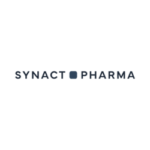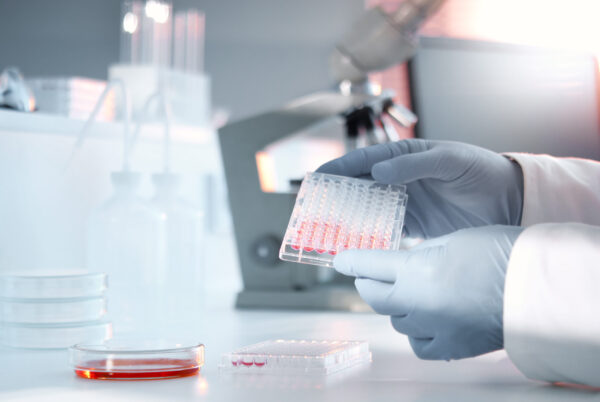Valuation
We value SynAct at SEK1.97bn or SEK36.9 per share using a risk-adjusted NPV approach
with a 12.5% discount rate. Our valuation primarily reflects contributions from lead
asset resomelagon across (1) RA, both early-stage patients and flare-ups post-biologics
DMARD therapy, (2) inflammation related to respiratory viral infections and (3) PMR.
We exclude the IMN indication from our valuation given the patient recruitment challenges
in the ongoing Phase IIa study and the likelihood of programme discontinuation. Our
valuation also incorporates pro-forma net cash of SEK104.3m, which includes an end-H125
cash balance of SEK68.9m plus SEK35.4m from post-period warrant conversions (discussed
in more detail in the Financials section below).
Note that while the company has another development asset in it pipeline, TPX-11 (targeting
post-surgical organ failure), given that its still in pre-clinical development, we
exclude it from our current valuation for SynAct but note the upside potential on
clinical entry.
We list below the underlying assumptions for our rNPV for resomelagon.
Rheumatoid arthritis (newly diagnosed patients and flares)
Indication focus: While we believe resomelagon’s applicability may span a range of chronic autoimmune/inflammatory
conditions (where glucocorticoids are widely utilised), given the focus of the Phase
IIb ADVANCE trial, our base case centres on newly diagnosed, moderate-to-severe RA
patients (in combination with methotrexate). We also see potential for the drug in
flare management in patients receiving biologic DMARDs. Our model assumes that SynAct
(or a licensing partner) will explore this as a future label expansion within the
broader RA space.
Target population – first-line RA: We assume an RA incidence of 70 per 100,000 people. Taking guidance
from the ongoing Phase IIb ADVANCE trial, we estimate the addressable patient population
in the first line setting to be newly diagnosed RA patients, with moderate-to-severe
disease characterised by a CDAI>22 (60% of the newly diagnosed patients) and high-sensitivity
CRP>3mg/l (we estimate 80% of patients have CDAI>22). We assume 80% of this patient
subset will be treated with methotrexate. Our model incorporates target markets of
the US and EU5, given that these make up the bulk of the global market opportunity
for the drug. This translates to an eligible patient population of c 94,000 in the
US and 88,000 in the EU5 per year, growing at 1.5% y-o-y.
Flares: We assume an RA prevalence of 1.36 million in the US and 1.64 million in the EU5.
We assume the addressable patient population to be the proportion of existing RA patients
treated with biologics (30% of patients suffering from RA), of which we understand
that around 30% on average suffer from flare-ups annually. This translates to an addressable
patient population of c 122,000 in the US and 147,000 in the EU5 per year, growing
at 1.5% y-o-y.
Peak penetration rates: We assume peak penetration rates of 25% across both indications, with peak sales
achieved seven years post launch. Given the lack of other glucocorticoids-sparing
treatments, this could turn out to be conservative, should efficacy be established
in larger, randomised clinical trials.
Treatment duration: For first-line newly diagnosed patients, we have split our assumed treatment duration
for eligible patients based on estimated response rates seen in the Phase IIa BEGIN
study. We assume 40% of the resomelagon plus methotrexate treated patients will be
able to achieve ACR50 or ACR70 or above (>50% and >70% improvement in RA symptoms).
We estimate this patient cohort will stay on treatment for the long term, with a 25%
annual drop-out rate. For the remaining patient population with an improvement in
symptoms of less than 50%, we assume a treatment duration of six months.
Given the transient nature of flares and taking guidance from the average treatment
periods with glucocorticoids, we assume an average treatment duration of six months
for this indication.
Drug pricing: We model a monthly treatment cost for resomelagon of $3,500 (list price) in the primary
US market, with an effective price of $2,100, assuming a 40% payor discount and a
2% y-o-y increase. The pricing is benchmarked (with a material 40–50% discount) to
the average monthly price of approved biologics and JAK inhibitors for RA, with costs
ranging from $6,000 to $8,000 per month. We believe that a conservative estimate for
resomelagon is prudent as more competitive pricing (both methotrexate and glucocorticoids
are generic and several lower-priced anti-TNF biosimilars have entered the market)
will likely aid in improved regulatory and reimbursement discussions. For Europe,
we model an effective monthly price of around $1,000.
Trial costs and timelines: The ongoing ADVANCE trial commenced in September 2024 and topline readouts are expected
by end-Q126. Based on the R&D expenses over the past three quarters and accounting
for non-trial related spending, we estimate an overall trial cost of SEK90–100m for
the ongoing Phase IIb study, which translates to a per-patient trial cost of SEK375–420k
or $40–45k per patient. We estimate that the company needs to invest a further SEK70–75m
between Q325 and Q126 on the ADVANCE trial, following which we assume the next phase
of development to be undertaken by a licensing partner.
Peak sales potential and launch timelines: We forecast commercial sales for resomelagon to 2045 across both indications, projecting
peak sales to be achieved in 2040 based on the drug’s IP protection. We estimate peak
global sales of $2.3bn in newly diagnosed RA patients and $1bn in flares. We assume
a probability of success (PoS) of 30% in the first-line combination setting and a
more conservative 15% PoS in flares given clinical assessment of resomelagon for this
sub-class is yet to be initiated. This is also subject to revision based on resomelagon’s
progress through the clinic. We also highlight the possibility of further label expansion
to other autoimmune indications, which would add to the upside potential. We estimate
Phase III study completions in newly diagnosed patients and flares in 2029 and 2030,
with market launches in 2031 and 2032, respectively.
Licensing economics: We expect the company to seek partnership opportunities in 2026 following topline
readouts from the ADVANCE trial and prior to commencement of the Phase III trial in
newly diagnosed RA patients, which we estimate will be initiated in 2027 once a partner
has been on-boarded. To establish potential deal economics for resomelagon, we have
reviewed similar-stage licensing deals in RA and related autoimmune conditions over
the past 10 years (those with deal terms available). As reflected in Exhibit 12 below, there is a high level of variability in deal structuring and economics, which
we believe stems from factors such as the strength of existing clinical data, targeted
indications and deal timing. To avoid any ambiguity related to upfront and milestone
payment structuring, we use a more simplified approach by solely assuming royalty
payments, offsetting the lack of upfront and milestone payments by incorporating a
higher blended royalty rate of 20% for any future partnering deal (typical royalty
rates range from mid-single-digits to mid-teens).
| Exhibit 12: Selected licensing deals in autoimmune conditions |
 |
| Source: EvaluatePharma, Edison Investment Research |




























